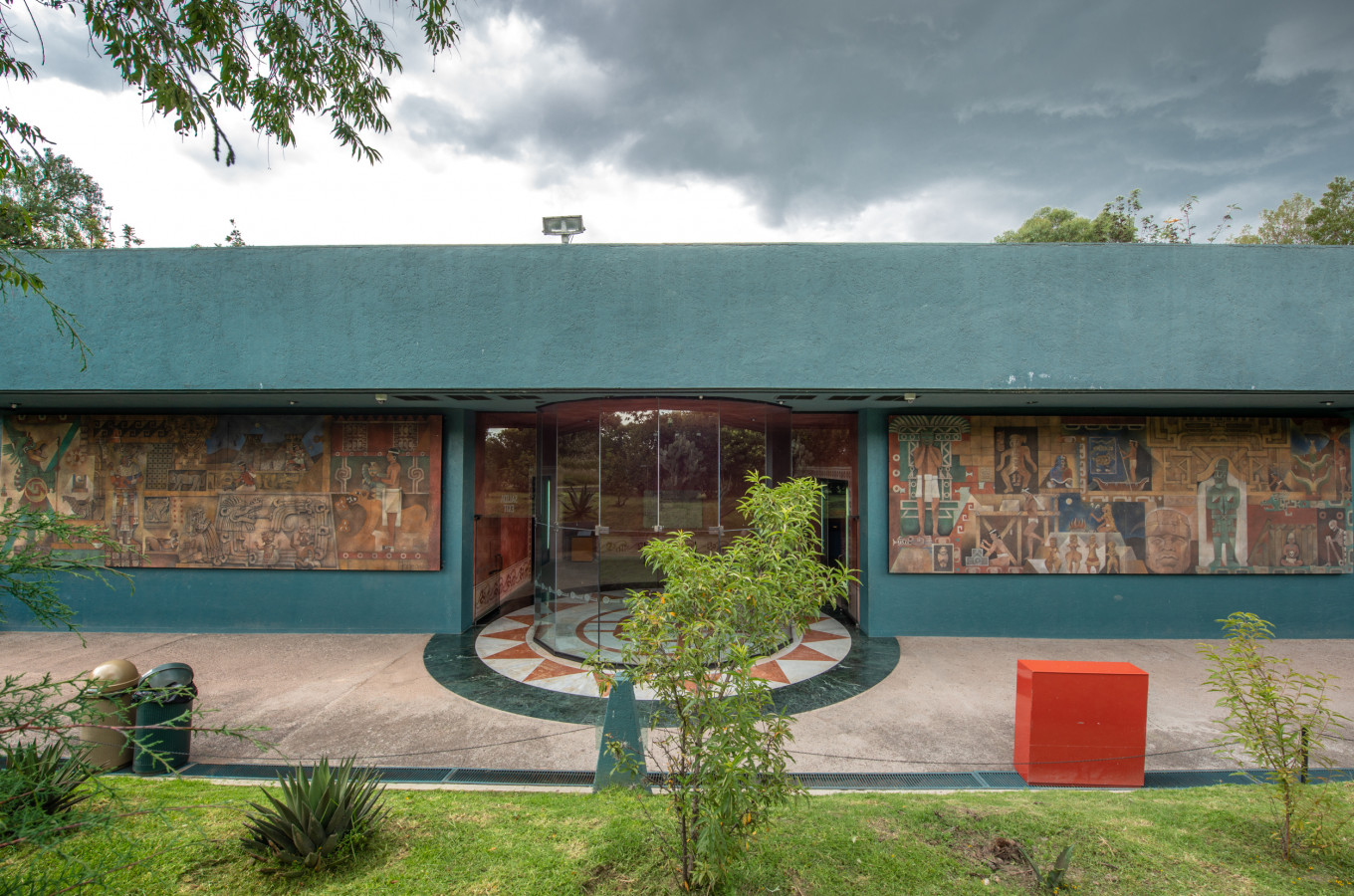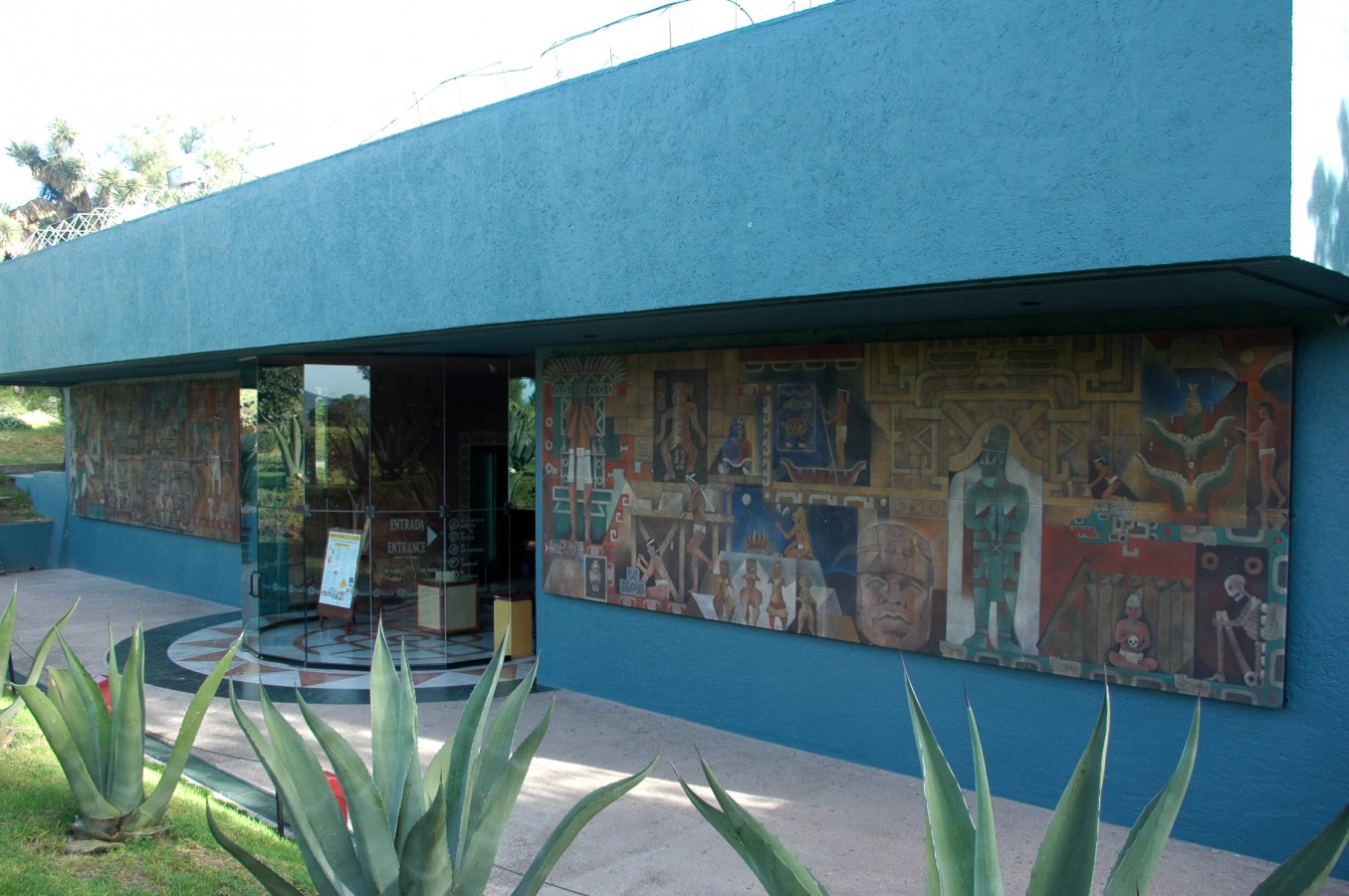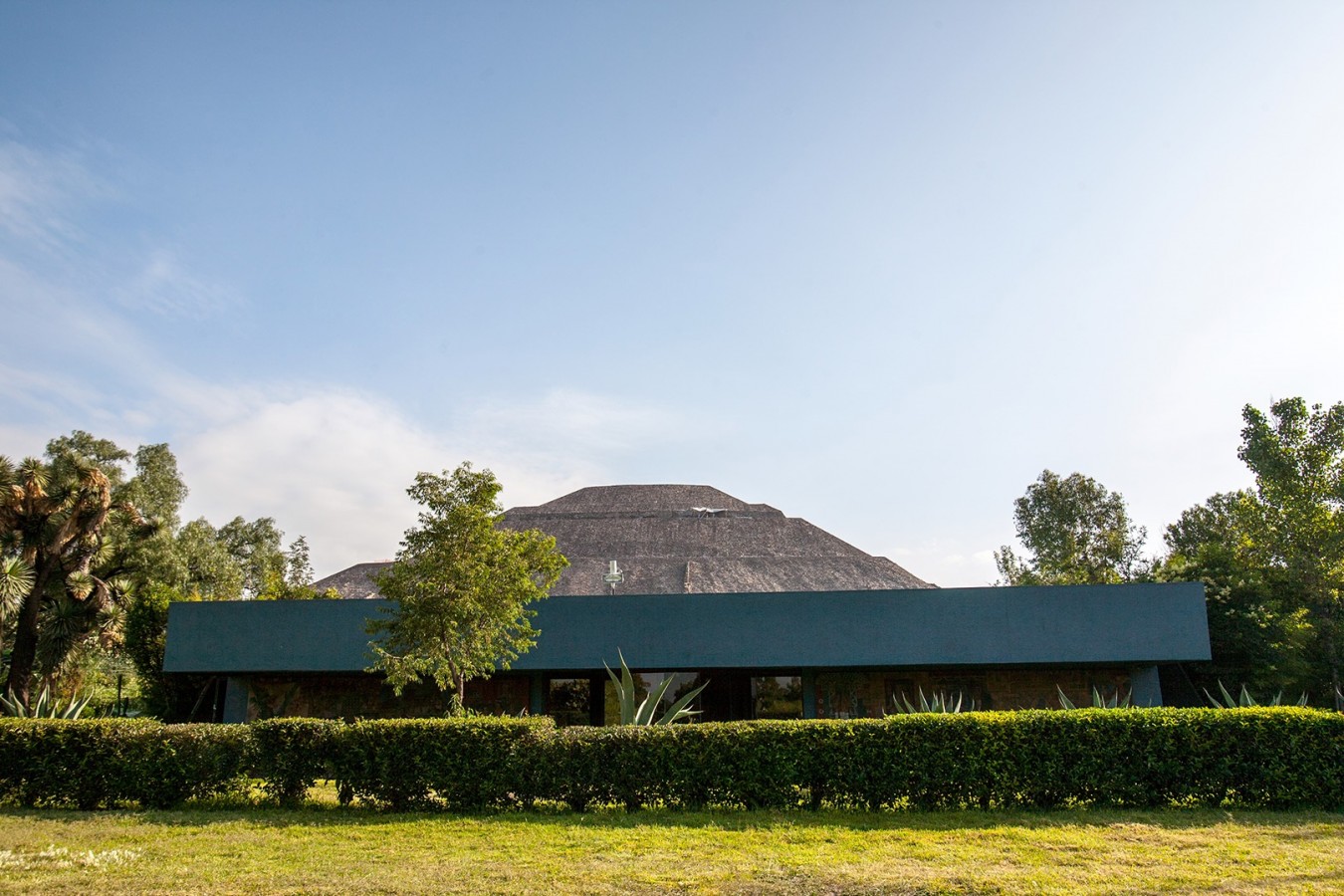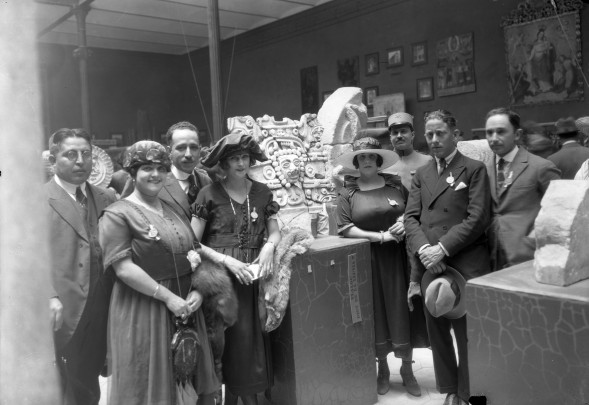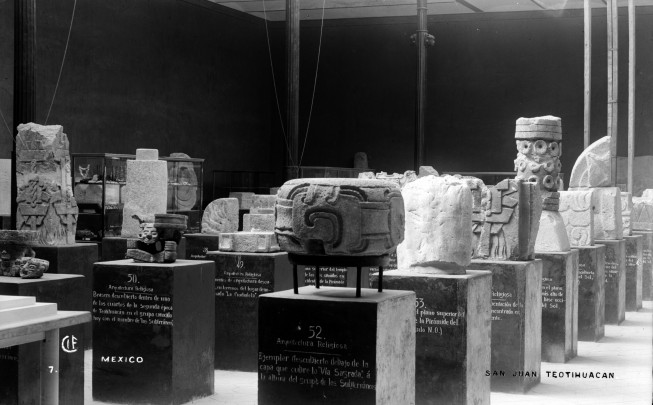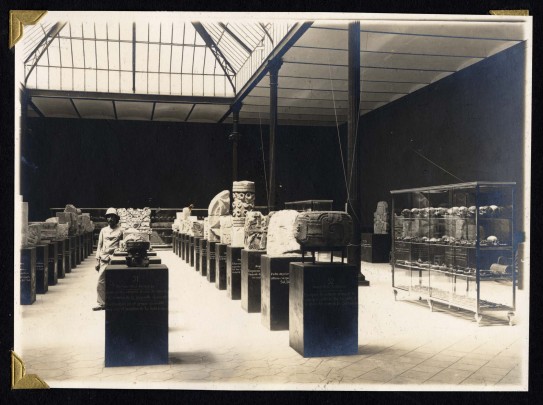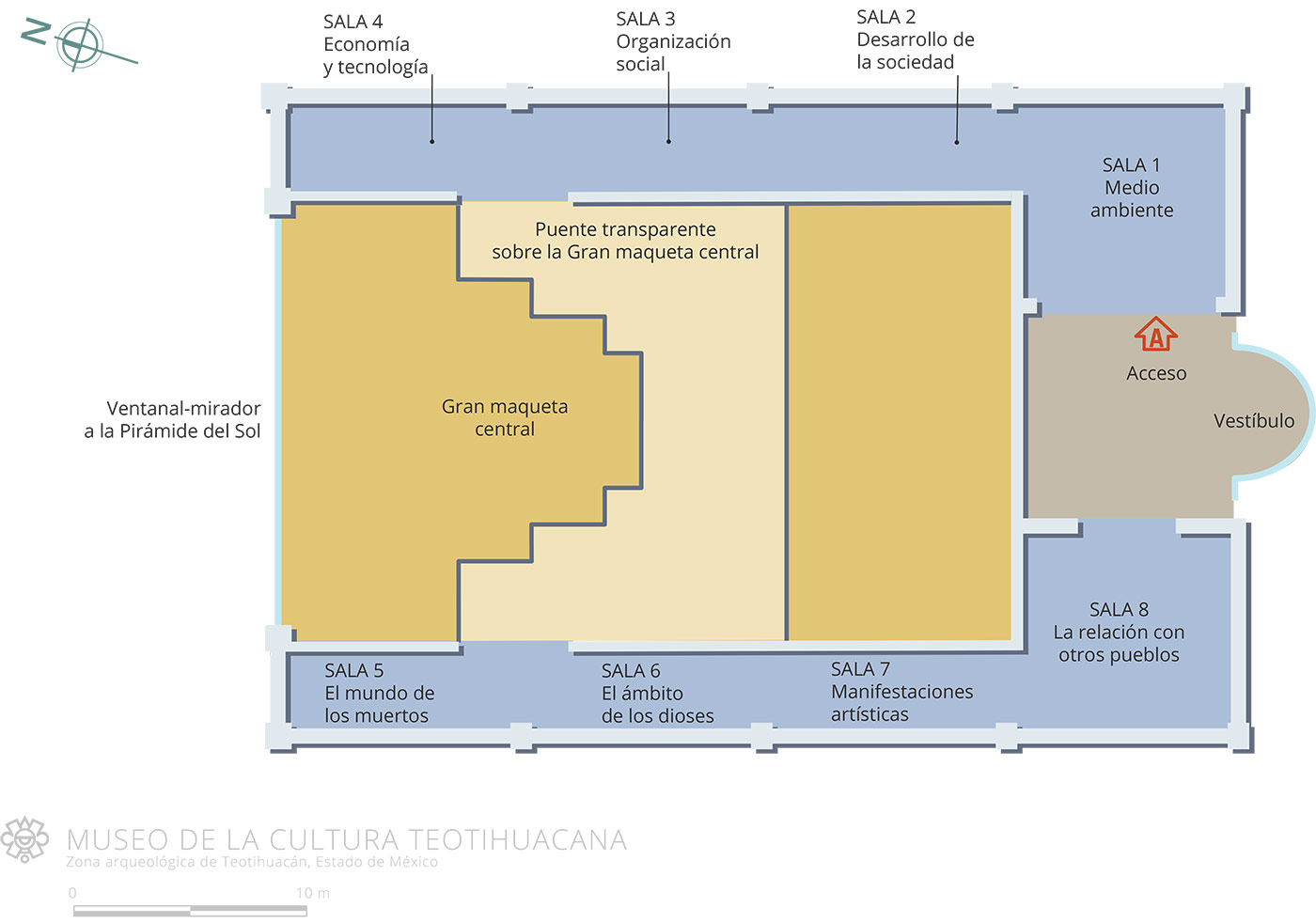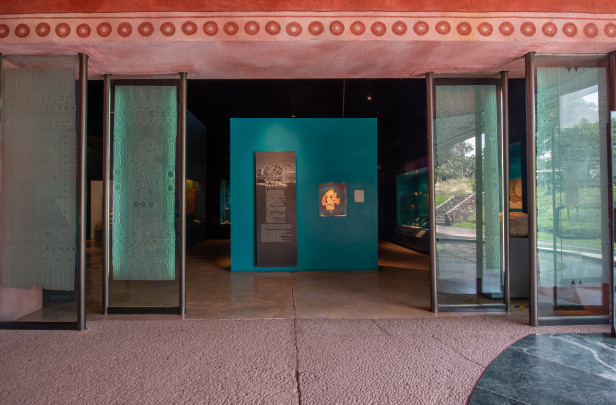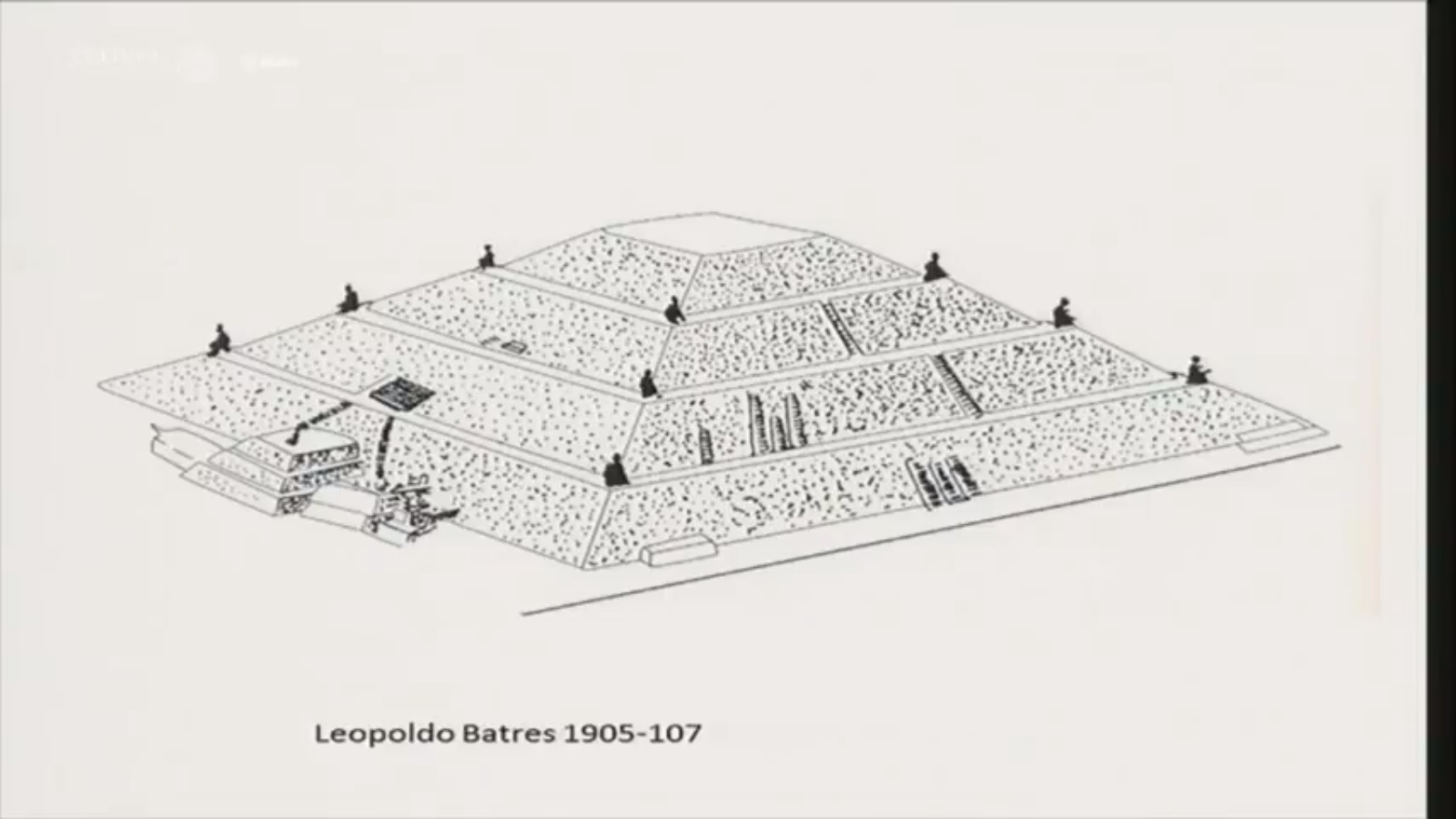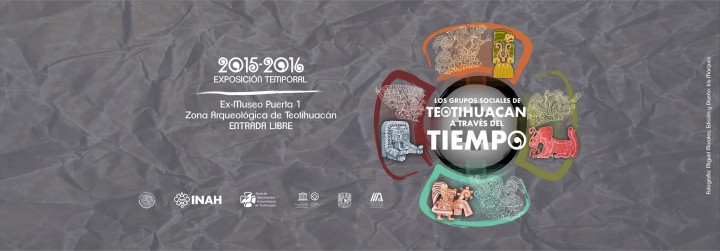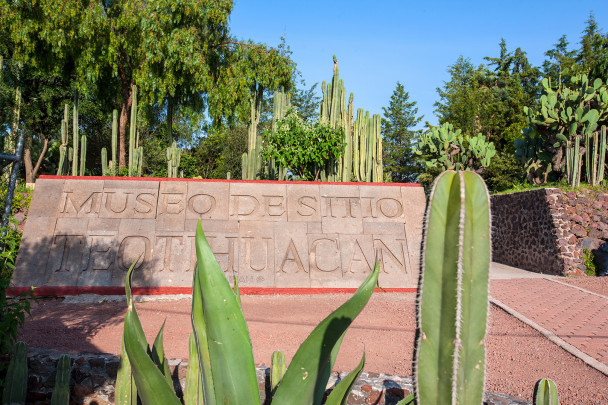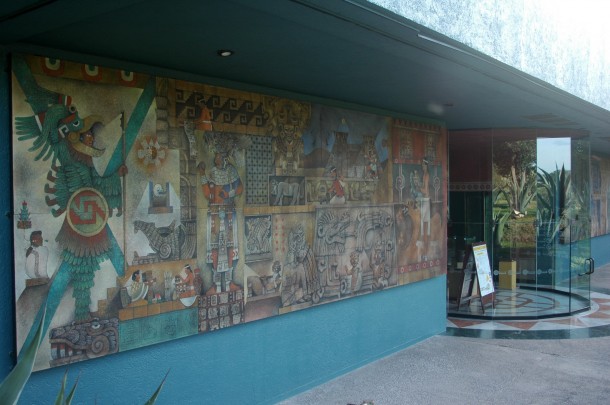The Teotihuacan archeological site museum (now renamed the Museum of Teotihuacan Culture) is a modern construction that blends in with its surroundings thanks to its semi-underground, plant-covered design, making it appear like another mound awaiting exploration.
To explain the identity of the society that inhabited this valley from the second century BC until the eighth century AD, the museum’s collection includes everything from everyday utensils to artwork and religious artefacts, amounting to a total of 600 objects made in a variety of materials (clay, shell, bone, textiles, wood, different types of stone, and so on), in addition to some recreated scenes. Arranged into eight different galleries, the exhibits refer to various aspects of the city and society—its economy, society, politics, technologies and religion.
This museum, positioned to the south of the Pyramid of the Sun, complements other similar spaces on the site, such as the Teotihuacan Mural Museum "Beatriz de la Fuente" and a temporary exhibition gallery located in the former museum building.
Excavations and research at the Teotihuacan site began in 1675, when Carlos de Sigüenza y Góngora explored the front plinth of the Pyramid of the Moon. In 1910, President Porfirio Díaz ordered the construction of the first site museum: the Teotihuacan Museum of Archeology, with displays including the findings of archeologist Leopoldo Batres (1852-1926). Two other museums have since been built at the site: the 1964 site museum, this time under the auspices of the National Institute of Anthropology and History (INAH, founded in 1939) and, in 1994, the current Museum of Teotihuacan Culture.
The site museum of the 1960s, 70s and 80s—a period when the INAH’s archeological and historical work was carried out separately—shows exhibits as if found in their original setting, helping the observer “read” them scientifically, as well as to enhance their visual appeal. Fernando Gamboa, Daniel Rubín, Miguel Covarrubias and Alfonso Caso were among those involved in this new approach.
The findings of the Teotihuacan Project 1980-1982 and the Special Teotihuacan Project 1992-1994—taking the approach outlined during the latter program (contextualizing this mighty culture in space and time)—have been housed in the more recent museum: the Museum of Teotihuacan Culture, built on the platform of the 1910 museum. The culmination of a visit around this new space is the Pyramid of the Sun rising up majestically as the crowning jewel of the entire collection, seen through a large picture window, above a model of the entire city.
From Mexico City, take Federal Highway 85D for Pachuca. After a few miles a turn off leads to the archeological zone, entrance is via the Gate 5. Alternatively, from Mexico City, take Federal Highway 132D "Ecatepec-Pirámides" and follow the signs for Gate 5.
-
+52 (594) 956 02 76
-
This email address is being protected from spambots. You need JavaScript enabled to view it.
-
FACEBOOK

